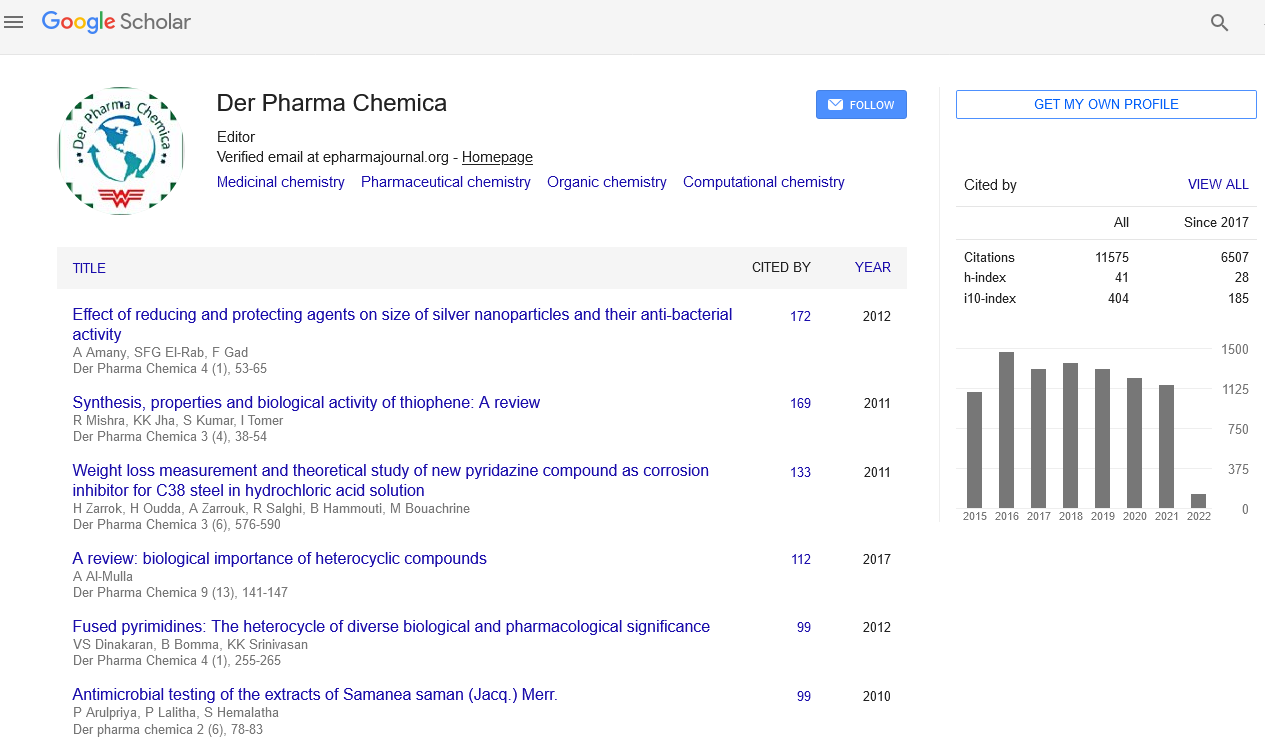Abstract
A computational approach for the identification of anti-HIV phytocompound(s) with respect to T-cell receptor through molecular docking
Author(s): Daisy. P*1, Rajalakshmi. M1, Lilly.V2, Anusta. S1The most common secondary immunodeficiency is Acquired Immunodeficiency Syndrome or AIDS, which results from infection with the Human Immunodeficiency Virus 1 (HIV1). HIV preferentially infects Tcells, attacking the very system that protects us from viruses. Each T-cell has its own type of T-cell receptor, which recognizes its own type of peptide. There is no cure for immunodeficiency disorders. Therapy is aimed at controlling infections and, for some disorders, replacing defective or absent components These drugs attempt to inhibit the process that the virus goes through to kill T- lymphocytes. The medicinal plants and compounds isolated from them is concerned, it is relevant to note that by simply looking to the recent literature, several reports have been published in which plant extracts have been claimed to exhibit anti-HIV-1 activity. 11 phytocompounds were chosen to evaluate anti-HIV activity. These 11 phytocompounds were analyzed with Lipinski’s properties and ADMET properties using Accord Excel 6.1. Molecular docking was performed between phytocompounds and T-cell receptor using Discovery Studio 2.1. The Ig-like domain of T-cell receptor was analyzed using PROSITE database. The phytocompounds saponin, catechin, costunolide, eremanthin, dihydroxy gymnemic triacetate, gymnemic triacetate, polysaccharide and terpenoid have hydrogen bond interaction with T-cell receptor except gymnemic diacetate. Of these nine phytocompounds, catechin and eremanthin have produced a minimal energy value with a maximal libdock score and also the hydrogen bond interaction. But the phytocompound catechin alone interacted with Ig-like domain of the T-cell receptor and it might be involved in the prevention of further T-cell infection by HIV. Therefore, catechin could be considered as an excellent clinically relevant oral drug in preventing AIDS.
Select your language of interest to view the total content in your interested language
Google Scholar citation report
Citations : 25868
Der Pharma Chemica received 25868 citations as per Google Scholar report
Der Pharma Chemica peer review process verified at publons
DOWNLOADS




